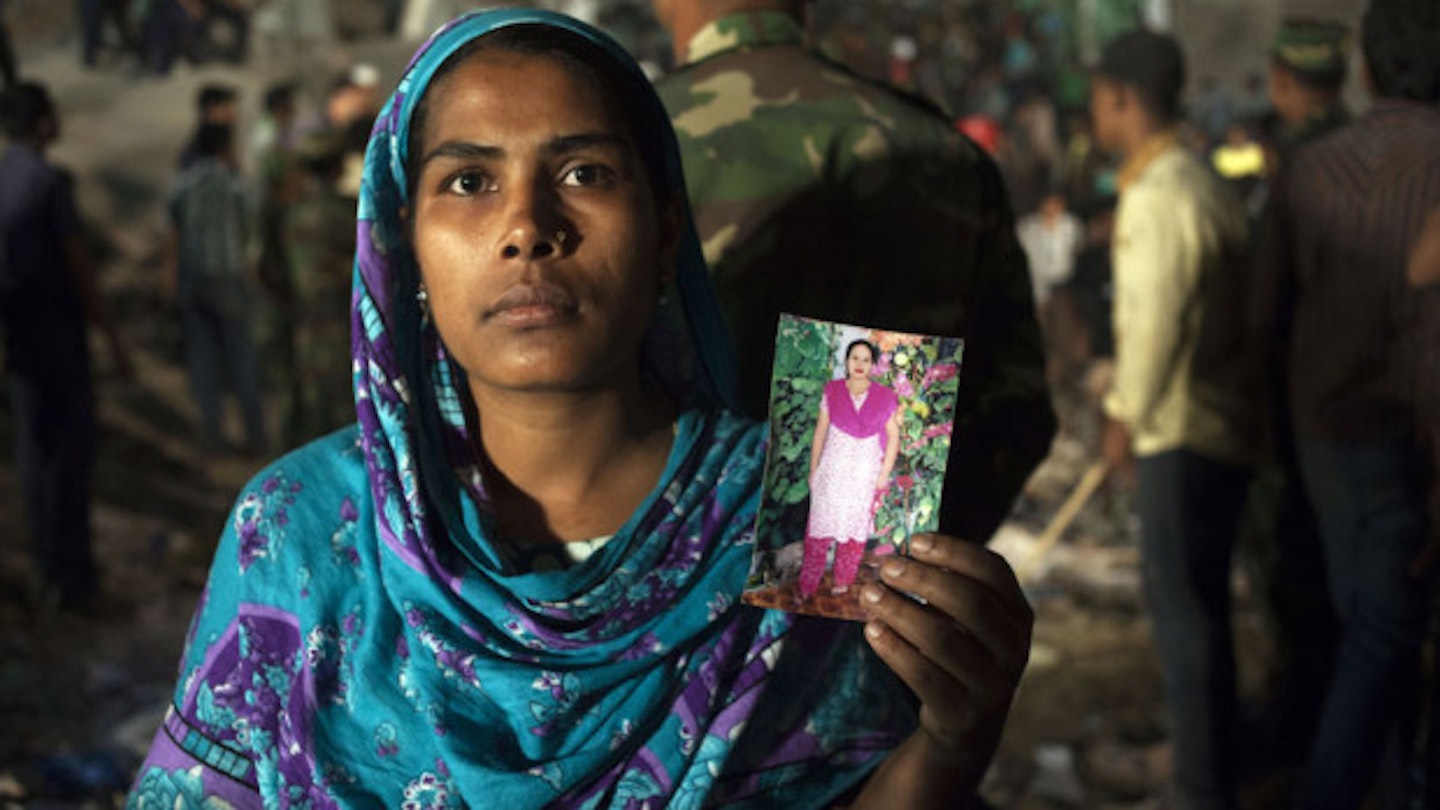Just over a year ago, Rana Plaza, a building housing several clothing factories in Bangladesh collapsed, killing 1134 of the workers inside.
The horrific incident made international news headlines, not least because it was the most deadly in a series of tragedies to occur in the Bangladeshi textile industry (just months earlier a fire in a factory a few miles away had killed 117 people when it transpired several exits were locked), but mainly because some factories in question were creating clothes for Western consumers to wear.
Now, a year on, a documentary has been made that explains how and why the tragedy at Rana Plaza happened. ‘What Bangladesh do really well is the low-cost clothing,’ explains the documentary director Zara Hayes. ‘They’re really good at doing the basics that are really sought after. Our consumption of clothes has increased massively and what we want to do is buy cheaper clothes. We spend the same amount as we did a decade ago but the difference is that we buy like three times as many clothes now. Basically, we’re buying cheaper, throwaway stuff and it’s getting made in places like Bangladesh, every single one of us will have something made there.’
That’s probably why the Bangladeshi garment industry is huge. Next to China, it’s the second largest apparel exporter in the world; which for a country of 150 million (China has 1.3 billion) is impressive stuff.
While problematic, the garment industry in Bangladesh has transformed the country’s economic prospects – especially those of women. ‘It’s incredible in the sense of women’s empowerment,’ Zara says. One point her documentary is keen to make is that women who would previously have been stuck in remote villages are now able to work, bring in a wage and support their families; something that never would have been possible without the huge number of jobs the industry’s created.
There’s an amazing scene in her documentary in which a couple of teenage girls explain how proud they felt receiving their wage packets for the first time. ‘Really, Bangladeshi girls aren’t all that different from Western girls. They get their wages and they go to the market on a Friday and they buy clothes. I really wanted to make the point that we’re all the same really and it’s this weird globalised system that means that we can buy things they make for the same as a cup of coffee,’ she says.
But with booming industry comes high demand and with high demand comes lower standards in other areas. Last week, Mohammad Sohel Rana; the owner of the building was charged along with 17 other people with breaching construction regulations. Despite being warned of a crack in his building on April 23rd; the day before the Rana Plaza collapse – a realisation that caused the buildings’ workers to be sent home over safety fears, Rana refused to acknowledge that there was a problem. ‘A massive press conference was held and somehow he managed to convince them that there was nothing to see there. He got an engineer to come and assess the crack. This whole tragedy could have been completely avoidable,’ says Zara. ‘Some of the workers were threatened not to be paid for the whole month… these are workers that are relied on by their families for income and are so terrified of losing their jobs. That’s why it’s such an awful tragedy because they all went in that day knowing that it could happen. And it did.’ One of the darkest scenes in Zara’s documentary is when a girl named Shopna remembers talking to her mother the night before and saying: ‘Please pray for me, I am going to work.’
The collapse itself was fast; the lights cut out, the generators cut in and the already fragile building fell in less than 90 seconds, just a few minutes before 9AM on 24th April. Many workers escaped early on but many more, like a woman interviewed in Zara’s documentary named Rojina, were trapped for days – only rescued in circumstances too horrific to imagine. ‘I never thought that I’d have to amputate my own arm, but I was forced to by the situation,’ Rojina explains in the film.
‘So many people saw things that you wouldn’t wish on your own worst enemy,’ says Zara. ‘Look at Rojina, she’s a beautiful, healthy, clever young woman and her life has been changed forever.’
In the year that’s passed since the tragedy, many Western clothing companies have signed the Accord On Fire And Building Safety – a legally binding agreement in which those involved in the textile industry are required to maintain the minimum safety standards for working environments. The minimum Bangladeshi wage has also doubled; although at around £40 a month, it’s still one of the lowest in the world.
So is there anything we do? ‘Consumer’s attitudes put a lot of pressure on companies for prices and things.’ Says Zara, ‘I still do go shopping and buy as many clothes but I think about who’s making them and the process of how it has ended up there. Don’t just not buy clothes from companies whose clothes are created in Bangladesh because that’s the worst thing you can do for Bangladeshi women who are feeling empowered and have their own money. If you want to keep going, it’s about buying stuff with your eyes open, because it’s too easy not to care.’
Clothes to Die For, Monday 21 July at 21.00 on BBC Two
This article originally appeared on The Debrief.
